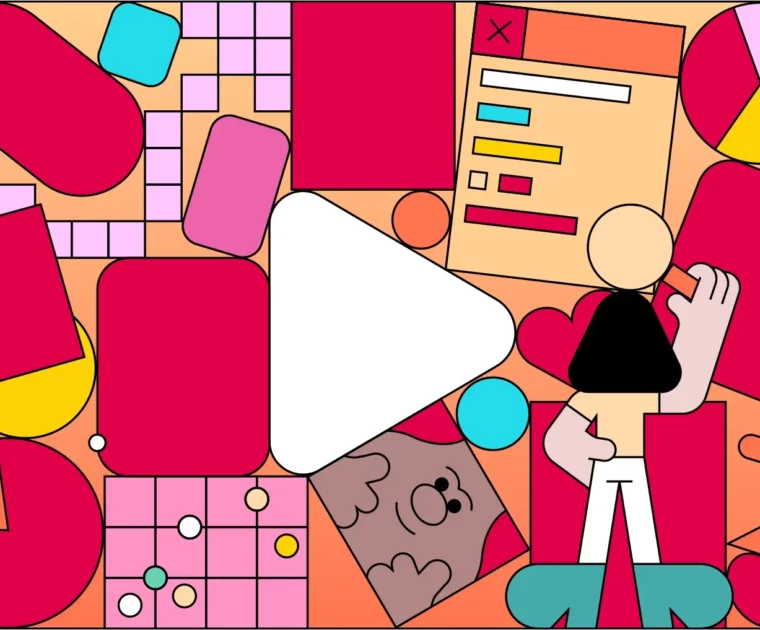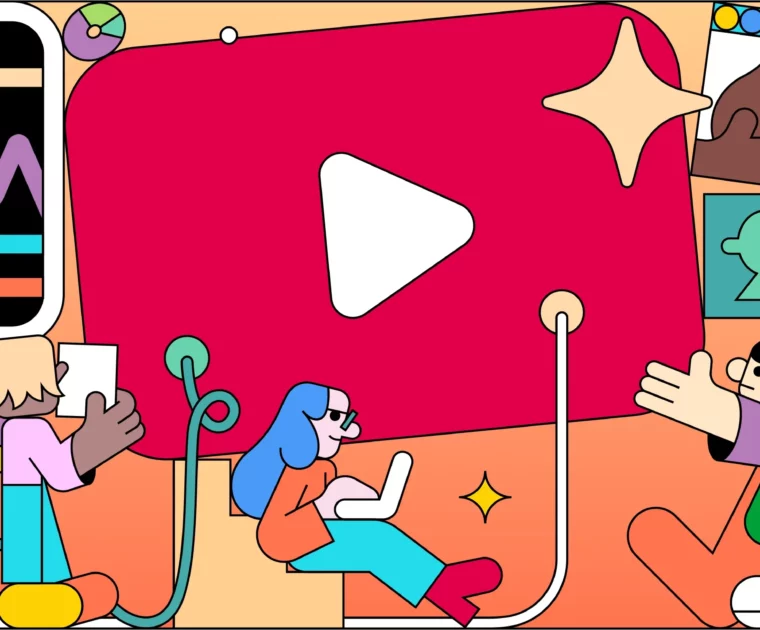With over 2.5 billion users logging in monthly, YouTube has become a goldmine for brands and businesses wanting to connect with their ideal audiences and grow their online presence. The platform’s importance continues to grow, especially with the rise of YouTube Shorts and the constant tweaks to the algorithm, offering even more ways to engage and captivate viewers.
In this comprehensive guide, we’ll dive into why YouTube marketing is crucial, the benefits it offers, how to understand the YouTube algorithm, and how to set up your YouTube marketing for success. Let’s get started!
So, Why YouTube Marketing?
Have you ever purchased a product or service after seeing it on YouTube? Or maybe you were curious and wanted to know a little bit more about a product and took to YouTube for due diligence in the form of research? Or wondering about a topic, so you skip the Google search and just head to YouTube to binge-watch 22 nine-minute videos (give or take two minutes) to help you feel like an expert in an afternoon.? Yeah, me too.
For many YouTube users, YouTube is a frequent stop on our buyer’s journey. YouTube has transformed from a simple video-sharing platform into a powerful marketing tool that businesses can’t afford to ignore. Let’s take a look at a few YouTube stats to provide a bit of context as to why that is:
Worldwide, YouTube is one of THE most popular destinations on the web.
- YouTube is the second-largest search engine after Google, with over 30 million daily visitors.
- YouTube is the second most-used social media platform in the world (2024 Digital Global Overview, Slide 232).
- YouTube is available in almost 100 countries and supports 80 different languages.
YouTube is also one of the most-used streaming platforms.
- As a video platform, YouTube outperforms TikTok, Amazon Prime, and Netflix in both the number of monthly users AND the amount of time spent on the app. #youtubeandchill (2024 Digital Global Overview, Slide 232).
YouTube helps marketers reach their target audience.
- On average, users watch YouTube for around 48.7 minutes each day, spending more time on YouTube than any other frequently used social media app. (that’s all me 😂 ).
- 70 percent of viewers have purchased after seeing a brand on YouTube
- 78 percent of marketers say YouTube is the most effective for reaching their business goals.
- According to the HubSpot Video Marketing Report, videos are most likely to go viral on YouTube (27 percent), TikTok (24 percent), Instagram (18 percent), and Facebook (14 percent).
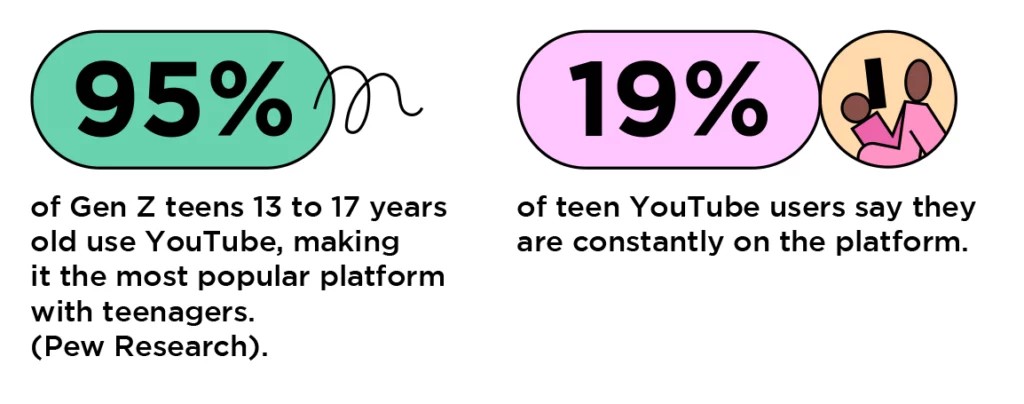
Creating a YouTube Marketing Strategy: Setting-up Phase
Okay. Let’s get down to brass tacks (because that’s what people like to get down to, so…) Creating a YouTube marketing strategy is an essential step for any business looking to expand its online presence. The strategy phase will pave the way for your success on the platform, allowing you to achieve your business goals.
First, let’s agree on what the algorithm wants😬
To succeed on YouTube, you need to understand how its algorithm works. Like the algo on any/every social media platform, YouTube’s algorithm along with YouTube features are designed to keep viewers on the platform by recommending content they are likely to enjoy and engage with. We know that, right? Algorithms don’t show favoritism; they’re just programmed to show the content most likely to help scrollers and viewers stay put.
Here are five key factors that influence the YouTube algorithm:
- Watch Time: The total amount of time viewers spend watching your videos. Videos that keep viewers engaged for longer periods are more likely to be promoted by the algorithm.
- Engagement: Likes, comments, shares, and subscriptions are indicators of viewer engagement. The higher these rates are, the better the signal to YouTube that your content is valuable and should be shown to more people.
- Click-Through Rate (CTR): Measures how often people click on your video after seeing the thumbnail and title. A higher CTR means your content is compelling and likely to attract viewers.
- Consistency: Regularly uploading content helps build a loyal audience and keeps your channel active in the eyes of the algorithm. Consistency in posting also increases the chances of your videos being recommended.
- Relevance: Using relevant keywords, tags, and descriptions helps YouTube understand what your video is about and match it with viewers’ interests.
Think of it as YouTube SEO. When it comes to your video being visible and being recommended, these are the factors that move the needle.
Next, let’s get the basics out of the way, right?
Okay. Would love to assume you already have a YouTube account and a channel that includes videos. But… that would be presumptuous, so let’s spend a few seconds just checking to make sure we’re on the same page here.
Setting Up Your YouTube Channel
The first step in your YouTube marketing strategy is setting up a professional channel. Here’s how to get started:
- Create a Professional Account: Sign up for a YouTube account using your business email. This will give you access to YouTube Studio, where you can manage your channel and track performance.
- Channel Optimization: Choose a clear and recognizable profile picture (such as your logo) and a banner that represents your brand. Write an engaging channel description that tells viewers who you are and what they can expect from your content.
- Setting Up YouTube Studio: Familiarize yourself with YouTube Studio, the platform’s hub for managing your videos and analyzing performance. Here you can upload videos, create playlists, and access detailed analytics.
Beyond that, the very beginning of your YouTube marketing strategy centers around understanding what your goals are, and the other platforms on which your audience spends time.
Now… let’s identify some goals
Before diving into content creation, it’s crucial to identify your goals. What do you want to achieve with your YouTube channel? Common goals include:
- Increasing Brand Awareness: Reach a larger audience and get your brand noticed.
- Driving Traffic: Use YouTube to drive traffic to your website or other social media platforms.
- Boosting Sales: Showcase your products or services to encourage purchases.
- Building a Community: Engage with your audience to build a loyal following around your brand.
Set SMART goals—Specific, Measurable, Achievable, Relevant, and Time-bound—to ensure your efforts are focused and trackable.
Get a beat on your target audience
To create content that resonates, you need to understand your audience. YouTube user habits shift from age group to age group, meaning people head to YouTube for different reasons.
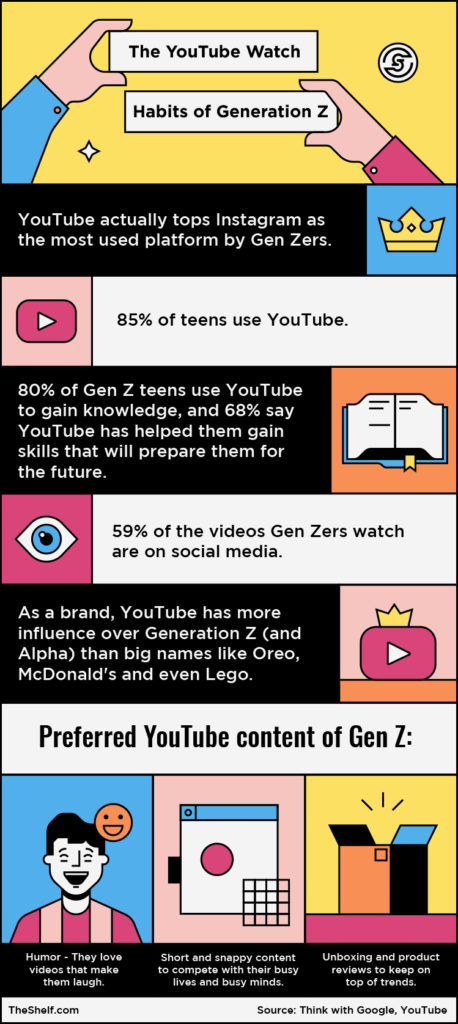
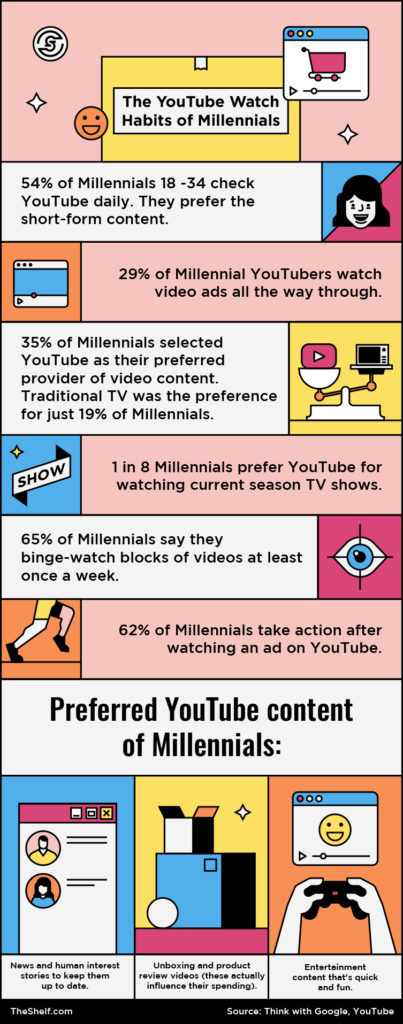
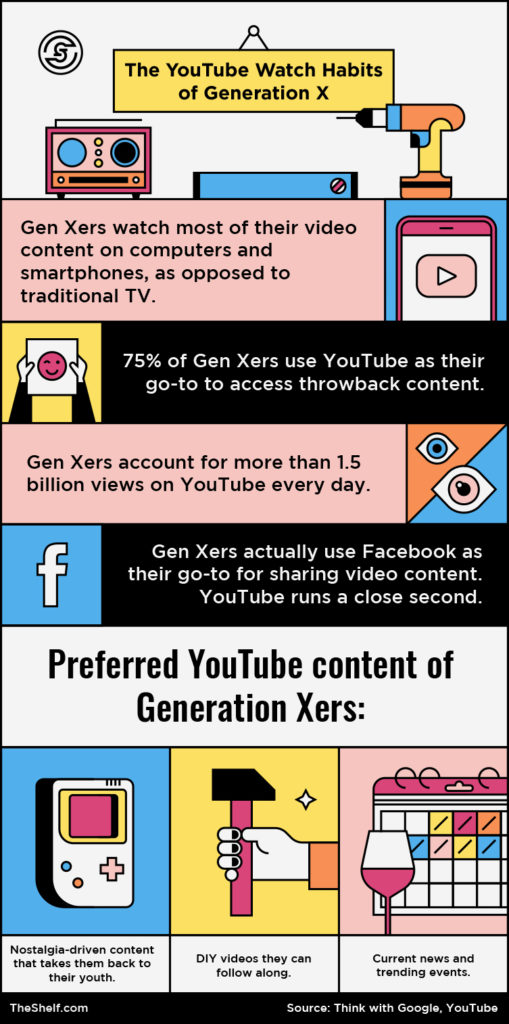

Audience Research: If you’re just starting out – which you may be – it can be tough to figure out exactly who you’re talking to when you post stuff online. One way to know if your content and messaging are hitting the right folks is to just look at the analytics dashboard on the channels where you’re already posting content and check out Google Analytics to grab demographic info about the people visiting your website.
Creating Viewer Personas: If you’re ready to dig deeper, consider developing detailed personas that represent your ideal viewers. For us, much of the data came from the similarities between our existing clients – the brands we worked with whose needs, work style, and corporate culture seemed to align with ours. Include information such as age, gender, interests, and challenges they face. This helps you tailor your content to meet their needs and preferences.
Content Planning and Strategy
Planning your content is essential for consistency and engagement. Here are some effective formats and content types to consider:
- How-To Videos: Educational content that teaches your audience how to do something.
- Product Reviews: Honest reviews of products that can help build trust with your audience.
- Vlogs: Personal vlogs that provide a behind-the-scenes look at your business or daily life.
- Interviews: Engage with industry experts or influencers to provide valuable insights to your audience.
- Unboxings: Showcase new products with unboxing videos to generate excitement.
- Challenges and Trends: Participate in or create challenges to engage with popular trends.
- Live Streams: Host live Q&A sessions, product launches, or events to interact in real-time.
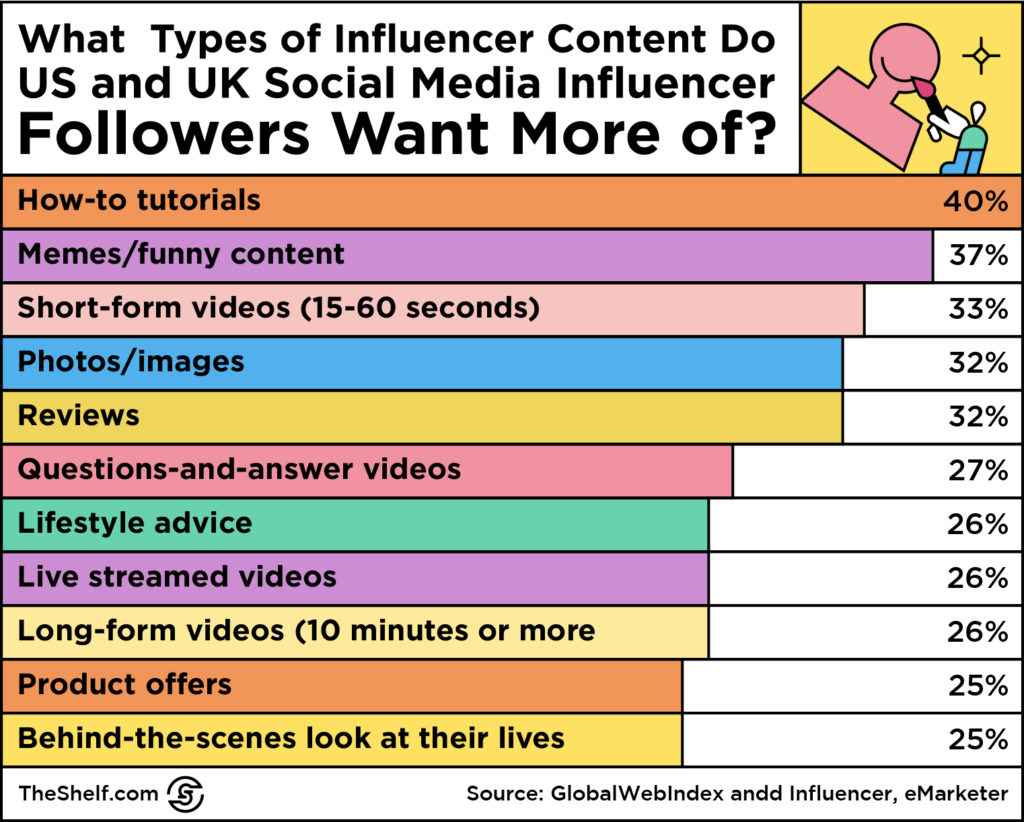
Create a content calendar to plan your uploads and ensure you’re posting consistently. This helps maintain viewer interest and engagement.
Optimize Videos for SEO
Optimizing your videos for search engines is crucial for visibility. Here’s how to do it:
- Keyword Research: Identify relevant keywords using tools like Google Keyword Planner and TubeBuddy. Include these keywords in your video titles, descriptions, and tags.
- Video Titles and Descriptions: Write compelling titles and detailed descriptions that include your main keywords. This helps YouTube understand what your video is about and improve its chances of appearing in search results.
- Tags and Thumbnails: Use relevant tags and create eye-catching thumbnails to attract clicks. Thumbnails should be clear, high-quality, and representative of your content. And you know what – don’t be afraid to test your thumbnails to which ones perform best.
- Using End Screens and Cards: Add end screens and cards to your videos to promote other content on your channel, encourage subscriptions, and drive traffic to your website.
Promoting Your Videos
Promotion is key to getting your content seen. Here are some strategies to help:
- Cross-Promotion on Social Media: Share your videos on Facebook, Instagram, Twitter, LinkedIn, and other social platforms to reach a broader audience. The important thing here is to repurpose, remix, or rework the video to make it native/appropriate to each of the different platforms to which you share your videos.
- Email Marketing: Include links to your latest YouTube videos in your email newsletters to drive traffic from your subscriber base.
- Embedding Videos: Embed YouTube videos in relevant blog posts and on your website to provide additional value and increase views. Plus videos surface in the Google SERPs and can increase your direct
Engaging with Your Audience
Building a community around your brand is vital for long-term success. Here’s how to engage with your audience:
- Community Building: Respond to comments, ask for feedback, and create a dialogue with your viewers. This makes them feel valued and heard.
- Encouraging Interaction: Use calls to action in your videos to encourage viewers to like, comment, and subscribe. Running contests and giveaways can also boost engagement.
- Running Contests and Giveaways: These can create excitement and encourage viewers to interact with your channel.
Collaborating with YouTube Creators
Incorporating YouTube influencer marketing into your overall marketing strategy will help expedite any top-of-funnel awareness and even help guide potential customers through the decision-making process. Plus, partnering with YouTube influencers can significantly boost your reach and credibility. Here’s how to collaborate effectively:
- Finding Relevant Creators: Identify influencers whose content aligns with your brand and target audience.
- Building Relationships: Engage with creators by commenting on their videos and sharing their content. Building a genuine relationship can lead to more successful collaborations.
- Creating Authentic Collaborations: Work with YouTube creators to create content that feels genuine and aligns with both brands. This could include product reviews, tutorials, or more entertainment-focused sponsored content.
- Promoting Collaborations: Cross-promote the collaborative content on your social media platforms to maximize reach.
Analyzing and Adjusting Your Strategy
Okay, here’s another big one: you must regularly analyze the performance of your content and use the findings to refine your strategy. Here’s what to focus on:
- Using YouTube Analytics: Monitor important metrics such as watch time, views, subscriber growth, and engagement. These insights help you understand what’s working and what isn’t.
- Continuous Improvement: Use the data to tweak your content strategy. If a particular type of video performs well, consider creating more of that content.
- Setting Benchmarks and KPIs: Establish benchmarks for measuring success and set key performance indicators (KPIs) to track your progress.
Conclusion: Laying the Foundation for YouTube Success
Building a YouTube marketing strategy starts with understanding the platform and its immense potential for your business. By creating a professional YouTube account, setting clear goals, conducting thorough audience research, and planning your content strategy, you lay the foundation for a successful campaign.
Remember to consistently create high-quality content, use relevant keywords, and promote your videos across various platforms. Analyze your YouTube analytics regularly to understand what’s working and refine your strategy accordingly.
By following these steps, you’ll create a strong YouTube marketing strategy that drives engagement, boosts your brand’s online presence, and helps you achieve your business goals. Get ready to harness the power of YouTube and watch your brand soar!



